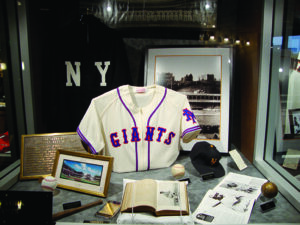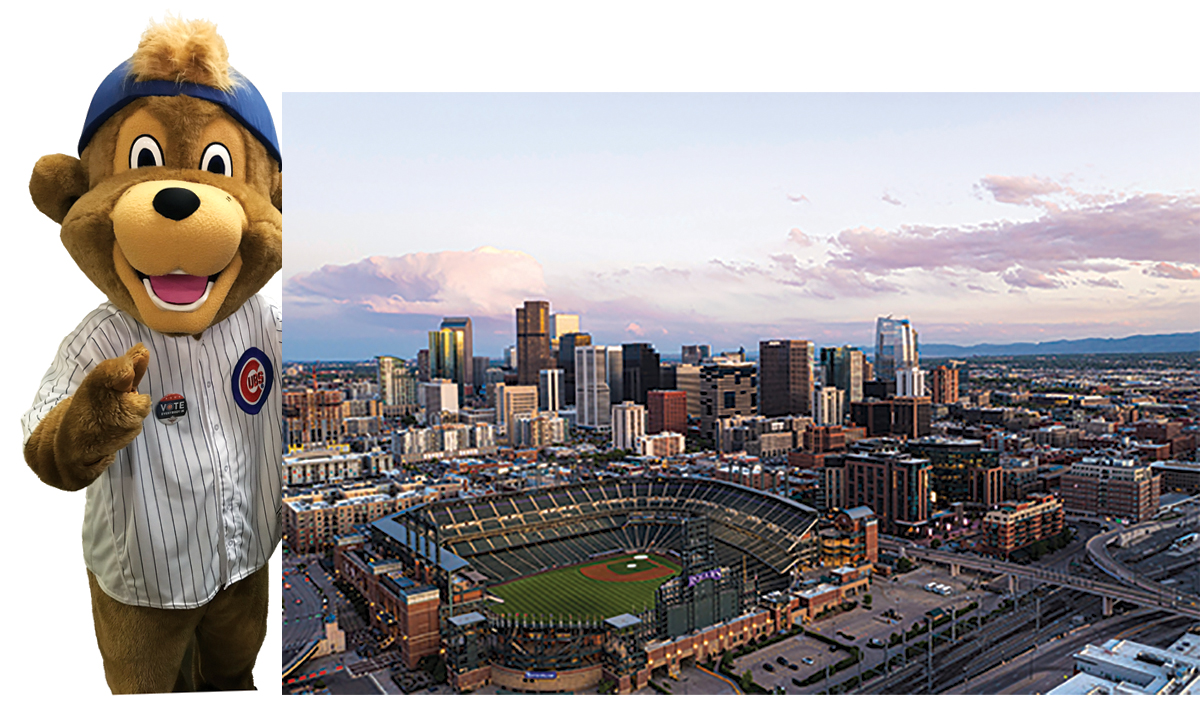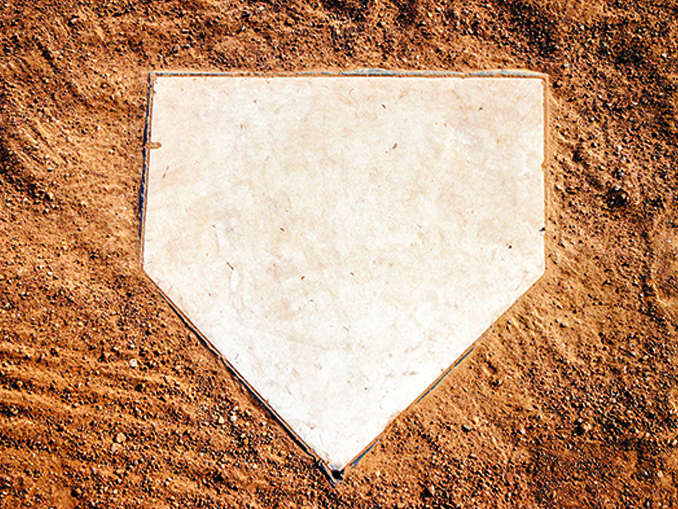
By Nick Wise, Arizona State University, Phoenix, Arizona, nick.wise@asu.edu
It’s summer, and the baseball season has been underway for a few months now. I have long been fascinated by baseball stadiums. Each time I buy a ticket and enter the stadium, I feel like a kid again. But, as a professional researcher, I see and think about the experiences we have in these venues much differently now!
One thing I like to work into my schedule when I travel in the spring or summer is going to a baseball game. Baseball is an American pastime and a popular part of sporting culture here. Games attract dedicated fans of one of the teams playing, as well as those who just want to go out and experience something new.
Now, you might be thinking, “Hey, baseball is a game of numbers and statistics.” I also realize you might argue that baseball is a quantitative researcher’s dream. Those who saw the movie Moneyball know the importance of statistical analytics in baseball.
Plus, when we watch baseball on TV, commentators always have some fun stat about each player. Players and game managers are constantly reviewing scouting reports on the opposition players to gain an advantage. So, YES, statistics are important… but I would argue, mainly if you are on the field playing the game.
As a fan of the game, and a qualitative researcher not on the field of play, there is much more to consider. In this article, I focus on the range of experiences offered to fans in the crowd. So, the next time you make your way out to the ole ball game, pay attention to the different experiences that surround you. Watch out for foul balls as well.
Baseball stadiums are no longer built just for sport. Today, we are offered so much more to capture our attention. I recently read and reviewed the book MALLPARK$, which covers new consumer possibilities and the business landscape of stadiums. The book challenged me to reflect further on my visits to ballparks.
So, grab a box of Cracker Jack and let me “lead off” with some ways of rethinking about baseball stadiums as I “take [you] out to the ballgame.” Have fun with the baseball puns, too… I certainly like to “throw them out” there! I have just about traveled “for the cycle,” having visited 25 of the 30 Major League ballparks around the U.S. and Canada.
Expanding Experiences
B. Joseph Pine II and James H. Gilmore wrote an article in the Harvard Business Review in 1998 titled “Welcome to the Experience Economy.” Over a decade and a half later, they wrote a follow-up article in 2013 reinforcing the importance of expanding on and offering different experiences to keep consumers engaged.
Attending sporting events is an important part of the visitor economy for a city, as these stadiums can attract tens of thousands of fans on any given spring, summer, or fall evening. Market researchers know that consumer demand changes, and patrons want something different to satisfy their needs.
Over the past decade, viewership surrounding baseball has seen declines. Some attempts to increase the pace of the game have helped, but we also have more ways to access the sport through various streaming services. The average cost of attending a game is also increasing, so venue planners are faced with the challenge of adding value, and they think about this by finding creative ways to offer different experiences beyond the game being played. Another challenge is what type of additional experiences can be offered.
A way I like to think about this is by embracing Pine and Gilmore’s model of the four E’s:
- Entertainment • Education • Escapism • [a]Esthetics
In this article, follow me around these different experiential bases as I reflect on observational journeys I make when I attend games at ballparks. I consider observations of experiences related to each of the four E’s that I encounter when I look critically at the visitor offerings in different ballparks.
As a qualitative thinker, I look for what emerges or stands out when I observe a setting and my surroundings.
The academic in me also wants to align these observations with theory. This helps frame my thinking as I consider and outline the four E’s of the experience economy. So, let’s “touch them all” as we navigate the different experiences you can observe next time you go to watch a baseball game live.

Image of a New York Giants jersey in a display of the team’s history when they were based in New York City. Image Credit: Eric BVD – stock.adobe.com
Let’s “Walk” through Some Experiential Observations
A baseball game can be long, so it is up to designers, planners, and managers to extend the experience and keep you there as long as they can. This way, you do more than just “keep your eye on the ball.” They need to focus on ensuring a range of experiences are offered to visitors at the ballpark. Offering a range of experiences not only keeps you in the stadium longer, but it means you are more likely to spend money and encounter another experience.
First E: Entertainment
Through observing the surroundings and experiences of the crowds, some may argue the main experience that attracts people is the Entertainment value. The atmosphere of cheering and ebbs and flows of the crowd engagement in relation to the game can greatly vary. But the between-innings features—including races between fans and/or mascots, prizes, and the distribution of t-shirts—keep fans anticipating these additional beyond-the-game engagement opportunities.
We are presented with many options when it comes to planning entertainment, so venue managers need to find creative ways to attract people. They may offer theme nights where fans get a souvenir on the way in to attract families. Or they might celebrate a player from years past to bring people back to reminisce about the glory days of a team’s success. When I attended a game in Anaheim, an Angels win meant fans were treated to a fireworks display. The food entertainment is also transformed. A chef lineup is drafted through the year in Boston and New York to get people to attend a game and enjoy gourmet food. It is no longer just about watching a game with a hotdog, nachos, beer, or soda. This gets people maneuvering through the park just to try different foods and come across other zones where one can participate in throwing or batting, or hang out in a fan zone overlooking the ballpark. Fan zones have become increasingly popular for entertaining fans and event-goers before and after games as well because they encourage people to arrive early or stay late, all in an atmosphere that connects people to their team and city.
 Clark the Cub and other baseball mascots launch t-shirts into the stands, challenge fans in races or batting competitions, and simply pose for photos with fans. Coors Field in Denver, Colorado, offers fans a view of the Rocky Mountains. Some seats within the stadium are exactly a mile above sea level, in keeping with Denver’s status as the Mile High City.
Clark the Cub and other baseball mascots launch t-shirts into the stands, challenge fans in races or batting competitions, and simply pose for photos with fans. Coors Field in Denver, Colorado, offers fans a view of the Rocky Mountains. Some seats within the stadium are exactly a mile above sea level, in keeping with Denver’s status as the Mile High City.
SECOND E: Education
Educational aspects are value-added opportunities to offer a different perspective. These go beyond the game itself, offering fans opportunities to learn about various aspects of the sport, the team, and its history. These educational experiences can be both additional options and something else to do during the game.
When a game is not happening, most stadiums offer tours. This is a way to see a stadium from a different perspective, and for those into facts, these tours offer plenty of insights. Some stadiums have museums, like in Cincinnati, that give fans a chance to explore a team’s past. Common in most are “Hall of Fame” or “Wall of Fame” sections. Here, fans can take a break from the game and read about the players of the past and their contributions throughout history. When I am back home in Philadelphia, I always like to spend an inning or two reading about players I watched as a kid!
Third E: ESCAPISM
Related to the community aspect is a chance to connect. For others, attending a baseball game is a chance to step away, relax, and unwind a bit, or Escape. Walking into the stadiums can provide a sense of escape from everyday life, offering fans an opportunity to immerse themselves in the game and forget their worries for a while. Some enjoy the shared sense of identity wearing the team brand as it reinforces a sense of community.
The combination of immersive atmosphere, sense of community, nostalgia, entertainment, and scenic surroundings creates an escapist experience that allows fans to temporarily leave their worries behind and revel in the joy of baseball. Escapism is also highlighted by entertainment aspects like the seventh-inning stretch. The seventh-inning stretch is a tradition and part of the ballpark experience where everyone is encouraged to stand while they play “Take Me Out to the Ballgame.” It is entertainment, but it becomes a break escape at this point in the game based on routine and tradition.
Fourth E: [A]Esthetics
[A]Esthetics and how we look at additional details are fascinating and unique in each stadium. Here, I look at design features, which can reflect the identity of the city where the stadium is or aspects of nostalgia. [A]Esthetics are something to embrace as they play a role in how a venue is marketed.
Denver’s Coors Field is designed in a way that you can watch the great American pastime and enjoy a view of the Rockies. You can also sit in a row of purple seats that extend around the stadium if you want to watch the game from precisely one mile above sea level (reflective of the Mile High City). Settings like Chicago’s Wrigley Field offer a walk back in time. Even walking up to the ballpark feels like 100 years ago. You walk by houses through a dense residential neighborhood instead of through large, paved parking spaces. It can feel like the stadium is frozen in time.
Another unique aesthetic is the scoreboards. For those who enjoy statistics, each time a player comes up to bat, you can read about their averages. The scoreboard also becomes an immersive experience as various games engage the crowd. Certain rituals happen as well; for example, a certain song might be played, such as “Sweet Caroline,” at the Red Sox games in Boston. At the start of the Pittsburgh Pirates games, they play a battleship animation to get the crowd excited about the start of the game.
There are many overlaps here across the different experiences; a “double play,” perhaps! If you are in Denver, you might be escaping from a long day at work while enjoying a sunset view of the Rocky Mountains while you gaze upon the field. Or you might celebrate an Angels win with an added feature of fireworks after you learn about the team’s history.
Closing Out the Bottom of the 9th
These reflections, guided by the four E’s, are fitting for qualitative researchers who study markets and consumer demand. Such a model can challenge us to look at spaces and consider how different elements of experience are brought into focus.
This is important in a time when consumer demand is like a pitch sequence that can “change up” fast on us and can leave researchers who inform strategic planning standing there looking for that next 98-mile-an-hour fastball to drive home a new consumer experience.
The implication for the venue organizers is offering different types of experiences to keep you engaged. “For it’s one… two… three”… [and four] experiences to look out for at the ole ballgame.
THINKING ABOUT THE EXPERIENCE ECONOMY
Authors B. Joseph Pine II and James H. Gilmore wrote an article in the Harvard Business Review in 1998 titled “Welcome to the Experience Economy.” Over a decade and a half later, they wrote a follow-up article reinforcing the importance of expanding on and offering different experiences to keep consumers engaged. In their article, they categorize four different experiences, which they call the four E’s: Entertainment, Education, Escapism, and [a]Esthetics.




